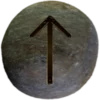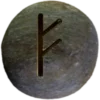Last Updated on February 21, 2025
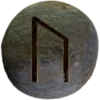
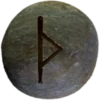
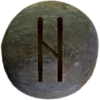
Origins and Meaning
The Ūruz (ᚢ) rune, pronounced “OO-rooz”, represents the aurochs, a massive wild ox that once roamed Europe. The name has variations like Ur, and Urox. The Proto-Germanic word ūruz refers to the aurochs, while the Old Norse úr means “drizzle” or “slag from metalwork.” These meanings connect to natural endurance and raw energy.
The Poetic Edda and Prose Edda do not directly mention the aurochs, but they refer to powerful cattle. The Völsunga Saga describes Sigmund and Sinfjötli drinking from an aurochs’ horn, reinforcing its link to strength. ![]()
Ūruz embodies untamed power and the will to survive. It represents resilience, personal growth, and the instinct to overcome challenges. Unlike domesticated cattle, the aurochs remained wild and free, making this rune a symbol of independence and unyielding force.
Symbolism and Uses
Ūruz represents strength, transformation, and vitality. Ancient warriors admired the aurochs for its power, often invoking this rune for courage and endurance. It also symbolizes physical health, as early runic inscriptions suggest its use in healing rituals.
Germanic tribes associated Ūruz with rites of passage. Young warriors proved themselves through trials of strength, sometimes hunting wild aurochs. This rune reinforced the connection between personal power and the forces of nature.
Runesmiths carved it into weapons, tools, and amulets. Many believed it could enhance endurance and stamina. Some used it in protection spells, seeing it as a force that repelled weakness and sickness.
Runic Inscriptions and Associations
Ūruz appears in several early runic inscriptions. Some scholars suggest it played a role in legal or social trials where strength mattered. It often appears with runes symbolizing change, suggesting an association with transformation.
This rune connects deeply to primal instincts. It urges a person to embrace challenges, knowing that struggle leads to growth. It reminds individuals to harness their inner strength and move forward with determination.
Runes Associated with Ūruz
Thurisaz (ᚦ), pronounced “THOO-ree-saz”, represents chaos and primal force. It shares an untamed energy with Ūruz but focuses more on destructive power. Where Ūruz embodies strength and endurance, Thurisaz brings the raw force of conflict and protection. Both runes remind a person that survival requires action.
Hagalaz (ᚺ), pronounced “HA-ga-laz”, symbolizes hail and sudden transformation. Like Ūruz, it reflects nature’s power but emphasizes necessary destruction. Together, these Elder Futhark runes show that endurance and challenge are linked. One must face adversity to grow stronger. ![]()
Its Power in Asatru
Ūruz embodies raw strength, endurance, and transformation. For Asatruar, this rune reflects the will to grow, endure hardships, and embrace change. Strength in Asatru is not just physical; it includes mental resilience and spiritual fortitude. Like the mighty aurochs, an Asatruar must stand firm in the face of trials.
This rune connects to personal might and the power of nature. Asatruar honor the natural world and the forces that shape it. Ūruz reminds them that survival depends on strength and adaptability. It also symbolizes the primal force within each person. Just as the aurochs roamed freely, Asatruar strive to live with courage and independence.
Ūruz also represents transformation through struggle. Growth often requires challenge, and this rune urges Asatruar to embrace those trials. Strength tempered by wisdom defines true power. With it, an Asatruar walks a path of endurance and honor.

